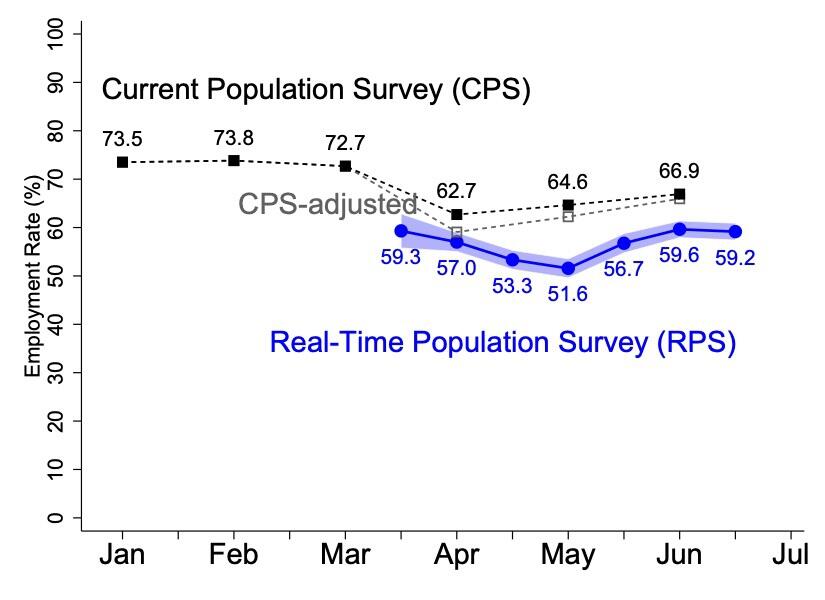
July 7, 2020
Labor market recovery slowing, new survey shows
Share this story
A biweekly survey that tracks the labor market in real time shows the market’s recovery slowed the week of June 21-27. In particular, the employment rate was essentially unchanged from early to late June, according to a report by economists from Virginia Commonwealth University and Arizona State University.
Total hours worked per working-age adult were flat as well, said Adam Blandin, Ph.D., an assistant professor in the VCU School of Business who conducts the biweekly Real-Time Population Survey with Alexander Bick, Ph.D., an associate professor of economics at Arizona State.
“During May and early June, the Real-Time Population Survey reported a strong increase in employment,” Blandin said. “However, in the week of June 21-27, the [survey] employment rate was 59.2% among working-age adults, essentially unchanged from 59.6% in the June 7-13 [survey] and well below its February rate of 73.8%. This is consistent with other real-time economic indicators, and may reflect renewed economic uncertainty in the midst of a new wave of infections across several states.”
Blandin and Bick started the Real-Time Population Survey out of a desire to use their skills as economists to help policymakers, reporters, analysts and the public during the COVID-19 pandemic. Their research has been cited widely in national publications such as The Wall Street Journal, Bloomberg, Business Insider, Forbes, The New York Times and The Washington Post, and has drawn attention from notable economists worldwide.
The Real-Time Population Survey closely follows the methodology of the U.S. Bureau of Labor Statistics’ Current Population Survey. Blandin and Bick have made improvements with each survey wave and plan to continue refining their methodology going forward.
The latest survey results reflect the week of June 21-27. Among the key findings:
- The unemployment rate fell. This occurred even though employment was flat because labor force participation fell slightly.
- Among those employed in both February and June, nearly 1 in 5 are working for a new employer relative to February. This suggests that much of the increase in employment during May and early June reflected workers finding new jobs, rather than returning to their former jobs.
The Real-Time Population Survey is conducted in collaboration with the Federal Reserve Bank of Dallas. The results from this survey do not represent official forecasts or views of the Federal Reserve Bank of Dallas, its president, the Federal Reserve System or the Federal Open Market Committee.
Subscribe to receive future results at https://sites.google.com/view/
Subscribe to VCU News
Subscribe to VCU News at newsletter.vcu.edu and receive a selection of stories, videos, photos, news clips and event listings in your inbox.



